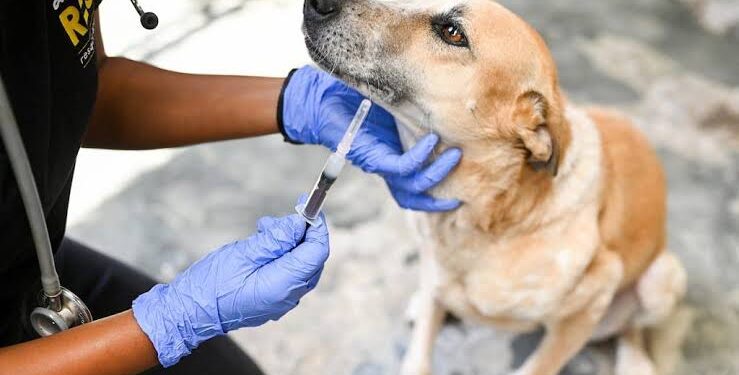New Delhi, July 12, 2025 – Rabies, a deadly viral disease spread primarily through dog bites, remains a significant public health challenge in India, which accounts for 36% of global rabies deaths. Despite being 100% preventable with timely medical care, the disease claims thousands of lives annually, particularly among children. This article explores the latest state-wise rabies data, medicine availability, and government precautions across India to address this crisis.
Rabies in India: A Snapshot
India is home to an estimated 30–60 million stray dogs, the primary carriers of rabies, contributing to 96% of human cases through bites. According to a 2022–23 community-based survey, India sees approximately 9.1 million animal bites annually, with 5.6 million attributed to dogs. The survey estimated 5,726 human rabies deaths each year, a figure lower than earlier estimates of 18,000–20,000 but still alarmingly high. Children under 15 account for 30–60% of cases, often due to unreported or unrecognized bites.
Rabies is endemic across India, except in the Andaman & Nicobar and Lakshadweep Islands. The National Rabies Control Programme (NRCP), launched under the 12th Five-Year Plan, aims to eliminate dog-mediated human rabies by 2030 through a “One Health” approach, combining human and animal health efforts.
State-Wise Rabies Burden
Data from the National Health Profile (2005–2020) highlights that five states—West Bengal (43%), Andhra Pradesh (10%), Maharashtra (8%), Karnataka (7%), and Delhi (6%)—account for over three-quarters of India’s rabies cases. In 2024, Karnataka reported a sharp rise, with 361,522 dog bite cases and 42 deaths, compared to 232,754 cases and four deaths in 2023. Bengaluru Urban recorded the highest number of deaths (16) in 2023, while Vijayapura saw the most cases (4,552) in early 2025.
Other states like Tamil Nadu and Kerala have also reported spikes. Tamil Nadu noted over 200,000 dog bite cases and 21 deaths in recent years, with concerns about vaccine shortages. Northeast India, including Assam, faces unique challenges due to low awareness and inadequate response systems. States like Yadgir, Chamarajnagar, and Kodagu report fewer cases, but underreporting remains a concern, especially in rural areas where access to healthcare is limited.
Medicine Availability: A Mixed Picture
Anti-rabies vaccines (ARV) and rabies immunoglobulin (RIG) are critical for post-exposure prophylaxis (PEP), which involves wound cleaning, vaccination, and, for severe cases, RIG injections. However, availability varies widely across states. The NRCP emphasizes ensuring free ARV and RIG at all health facilities, but shortages have been reported, particularly in Tamil Nadu, where untested vaccines were allegedly administered during a 2022 surge.
In Karnataka, the state’s medical supplies corporation includes ARV and RIG in its annual supply, ensuring availability in urban centers like Bengaluru. Goa, a success story, has robust PEP access, contributing to its elimination of human rabies deaths by 2019. However, rural areas in states like Bihar, Uttar Pradesh, and Northeast India struggle with limited access, forcing patients to travel long distances to facilities like Delhi’s Maharishi Valmiki Hospital, the city’s only rabies treatment center.
The NRCP advocates for the intradermal route of vaccination, which is cost-effective and requires less vaccine, but adoption is inconsistent. Only 66% of dog bite victims receive at least three doses of ARV, and nearly half of those starting treatment fail to complete it, increasing mortality risks.
State Government Precautions
India’s National Action Plan for Dog-Mediated Rabies Elimination by 2030 (NAPRE) guides state-level efforts, focusing on mass dog vaccination, public awareness, and intersectoral collaboration. Here’s how states are responding:
Karnataka: Declared rabies a notifiable disease in 2022, mandating case reporting. The state conducts annual mass dog vaccination drives targeting 70% coverage and has intensified surveillance through the Integrated Disease Surveillance Programme (IDSP).
Goa: Achieved human rabies elimination by 2019 through a One Health approach, vaccinating over 95,000 dogs annually (70% coverage) and educating 150,000 children yearly.
Tamil Nadu: Facing challenges post-COVID due to disrupted dog vaccination and birth control programs, the state is strengthening surveillance and PEP access.
Kerala: Reports high dog bite cases but has improved PEP availability in urban areas. Rural access remains a hurdle.
Northeast India: States like Assam lag due to poor awareness and inadequate veterinary infrastructure, prompting calls for stronger One Health initiatives.
Delhi: Facilities like Maharishi Valmiki Hospital handle high caseloads, but awareness campaigns urge avoiding dog contact and prompt wound cleaning.
Nationally, the NRCP has trained healthcare workers, established a helpline (15400), and set up 14 State Level Zoonosis Committees for coordination. A proposed MoU between health, agriculture, and wildlife ministries aims to institutionalize the One Health approach.
Challenges and the Way Forward
Despite progress, India faces hurdles: underreporting due to deaths outside hospitals, reliance on traditional healers, and public non-compliance. The stray dog population, estimated at 25–60 million, complicates vaccination efforts. Post-COVID disruptions have led to increased dog aggression, exacerbating bite cases.
To meet the 2030 zero-death goal, experts urge:
– Scaling up mass dog vaccination to 75% coverage by 2025.
– Ensuring free, quality-assured ARV and RIG at all health levels.
– Enhancing public education on wound cleaning (soap and water for 15 minutes) and seeking immediate PEP.
– Strengthening surveillance through real-time data platforms like the Integrated Health Information Platform (IHIP).
India’s fight against rabies is gaining momentum, with states like Goa showing it’s possible to eliminate human deaths. However, achieving the 2030 target will require sustained political will, community engagement, and robust healthcare access to save thousands of lives, especially among the most vulnerable.






































